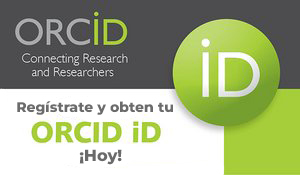7. Investigación Transdisciplinaria: una revisión del concepto de objetividad en el mercadeo
Transdisciplinary Research: a review of the concept of objetivity in marketing
DOI:
https://doi.org/10.5281/zenodo.7987684Palabras clave:
Investigación de mercados, Objetividad, Técnicas cualitativasResumen
El presente artículo tiene como objetivo evaluar la validez y pertinenciade emplear en el mercadeo, uno de los principios ontológicos del modelo moderno-positivista: la objetividad, a la luz de cambios de concepciones que se manejan en esta disciplina, específicamente, en el área de la investigación de mercados; a través de un contraste de conceptos de recientes descubrimientos en áreas como psicología, neurociencia y lingüística, se presenta un nuevo panorama que está cambiando los supuestos sobre los que se basa el mercadeo para entender al consumidor. La investigación evidencia que se está en un proceso de evolución de la moderna a una relación de mayor involucramiento con los consumidores, en la cual se asume una mayor carga de valores éticos, que desencadena la aplicación de nuevas técnicas de investigación, de cortes interpretativas y cualitativas.
Descargas
Citas
PARASURAMAN, A. (1991). Marketing research. New York: Addison-Wesley
Publishing Co.
PETER, J. (1992). Realism or Relativism for Marketing Theory and Research: A Comment on Hunt’s ‘Scientific Realism. Journal of Marketing, 56 (April), 72–79.
PETER, J. y OLSON, J. (1983). Is Science Marketing. Journal of Marketing,
(Fall), 111–25.
PINDYCK, R. y RUBINFIELD, D. (1997). Microeconomía (3era. ed.) Prentice-Hall. pág. 700.
QUIAN, R.; REDDY, L.; KREIMAN, G.; KOCH, C. y FRIED, I. (2005). Invariant
visual representation by single neurons in the human brain. Nature. No. 435, págs. 1102-1107.
SANTESMASES, M. (1997). DYANE. Diseño y análisis de encuestas en investigación social y de mercados. Madrid, España: Pirámide.
SHERRY, J. y KOZINET, R. (2001). Indagación cualitativa de marketing e
investigación de los consumidores, en Iacobucci, D. (Ed.) Marketing
según Kelloggs, Vergara Editores/Business, págs. 209-228.
SHETH, J.; MITTAL, B. y NEWMAN, B. (1999). Customer Behavior: Consumer Behavior and Beyond. USA: Harcourt Brace College Publishers.
págs.
SMITHEE, A. (1997). Kotler is dead. European Journal of Marketing. Vol.
, No. ¾, págs. 317-325.
SCHMITT, B. H. (1999). Experiential marketing: How to get customers to
sense, feel, think, act, and relate to your company and brands. New
York: The Free Press.
SCHMITT, B.H. (2003). Customer experience management: A revolutionary approach to connecting with your customers. John Wiley and
Sons.
SPIVEY, M.; GROSJEAN, M. y KNOBLICH, G. (2005). Continuous attraction toward phonological competitors. PNAS (Proceedings of the National Academy of Sciences) www.pnas.org_ cgi_doi_10.1073_pnas.
Revisado, Agosto 2005.
STANTON, W.; ETZEL, M. y WALKER, B. (2000). Fundamentos de Marketing. México: McGraw-Hill.
THOMPSON, C.; RINDFLEISCH, A. y ARSEL, Z. (2006). Emotional Branding
and the Strategic Value of the Doppelgänger Brand Image, Journal
of Marketing, Vol. 70, págs. 50-64
WILKIE, W. y MOORE, E. (2003). Scholarly Research in Marketing: Exploring the “4 Eras” of Thought Development, Journal of Public Policy
and Marketing, 22 (Fall), 116-146.
ZALTMAN, G. (2004). Cómo piensan los Consumidores. España: Ediciones
Urano-Empresa Activa. Págs. 389.
ZINKHAN, G. y HIRSCHHEIM, R. (1992). Truth in Marketing Theory and
Research: An Alternative Perspective. Journal of Marketing, 56
(April), 80–88.
ZYMAN, S. (1999). El final del marketing que conocemos. España: Ediciones Gránica. Págs. 278.
Publicado
Cómo citar
Número
Sección
Licencia
Derechos de autor 2023 INNOVACIÓN Y GERENCIA

Esta obra está bajo una licencia internacional Creative Commons Atribución-NoComercial-CompartirIgual 4.0.






